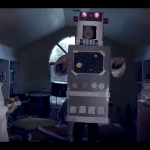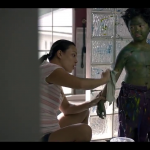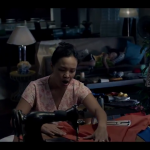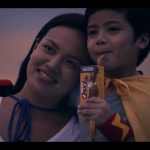“Hands” is the story of a fat, old
man named Wing Biddlebaum who lives isolated in the town life of Winesburg,
Ohio. He remained a mystery to the people after moving there 20 years ago. Upon
reading the story, we can say that the theme of the said story is isolation and
loneliness. The main character of the story lives alone and does not think that
of himself as in any way part of the life of the town where he lives and had
lived for how many years. We know that Wing Biddlebaum is a former teacher and
we learn that the main character has supposedly inappropriately touched the
boys he teaches and is now suffering the consequences. This is the reason why
he has moved to this town. The effective use of symbolism and imagery seems to
clearly demonstrate that Wing’s actions were sinful and now he is feeling guilt
for doing something wrong.
The most prevalent image in the
story is his hands. It was described as little, nervous and restless. He is
very expressive with his hands when talking. Because of his sin, Wing has
placed himself in a situation that prevents him from socializing with other
people and more importantly prevents him from continuing in the journey of life
towards happiness. His hands described physically as having slender fingers
gives us a feminine picture and of him and tells us what his sexual preference
may be.
Wing spoke closely only to George
Willard, the boy reporter of the Winesburg Eagle. George would occasionally
walk to his house in the evenings and Wing looked forward to these times. Only
with George would Wing become alive. These things happening in the story adds
to the feeling that Wing is a sinner; that he belongs to the federationJ. Why is it that Wing
always looks forward to these times? What are they doing? It gives us the idea
that they are doing something every time George comes to his house. And that something isn’t that nice to
mention. The suspicion is worsened by the fact that Wing would only come alive
when George is around. Hmmm isn’t that fishy?? JJ.
We are told that Wing’s hands are quick and skillful; he is talented. The
question is “in what way?”
If Wing is a sinner, the ravine in
which he lives so close to can be seen as hell. Through his action, Wing has
brought himself closer to hell, and while he hasn’t yet made the plunge down
the ravine, his surrounding would indicate that he has not made any
improvements by changing his thoughts and/or behavior. He lacks the courage to
change. Wing’s actions support this as he is always nervous and frantic. He
goes out and stands on the fence, looking down the road for George, and the
hurries back to his house, frightened or coward. Because he has not truly
repented and changed, he is stuck near the ravine and cannot continue on the
journey of life.
As Wing looks out towards the
public highway, we are shown a boy and a maiden from the berry wagon who are
obviously flirting. This is to show us and Wing how things are meant to be:
boy/girl and man/woman, not man/boy.
In the flashback to the time when
Wing was the school teacher known as Adolf Myers, we are given multiple
descriptions of how Wing would stroke the shoulders and touch the hair of the
boys he was teaching. These images tell us that something inappropriate is
going on which, as mentioned, caused why he transferred to Ohio. The last
paragraph of the short story tells us that Wing hasn’t change. It was mentioned
in the paragraph that “he still hungered for the presence of the boy, who was
the medium through which he expressed his love of man”. With this sentence all
suspicions are being confirmed. Wing is a sinner. He indulged and is indulging
into something that a real man should not be doing. This also confirms that he
has done something to his students in Pennsylvania and the accusation of the
people there are all true. He used George to satisfy his needs and to express
his love not towards a woman but towards a man. This last paragraph of the
short story answers all questions that is formulate din the minds of the
reader.












